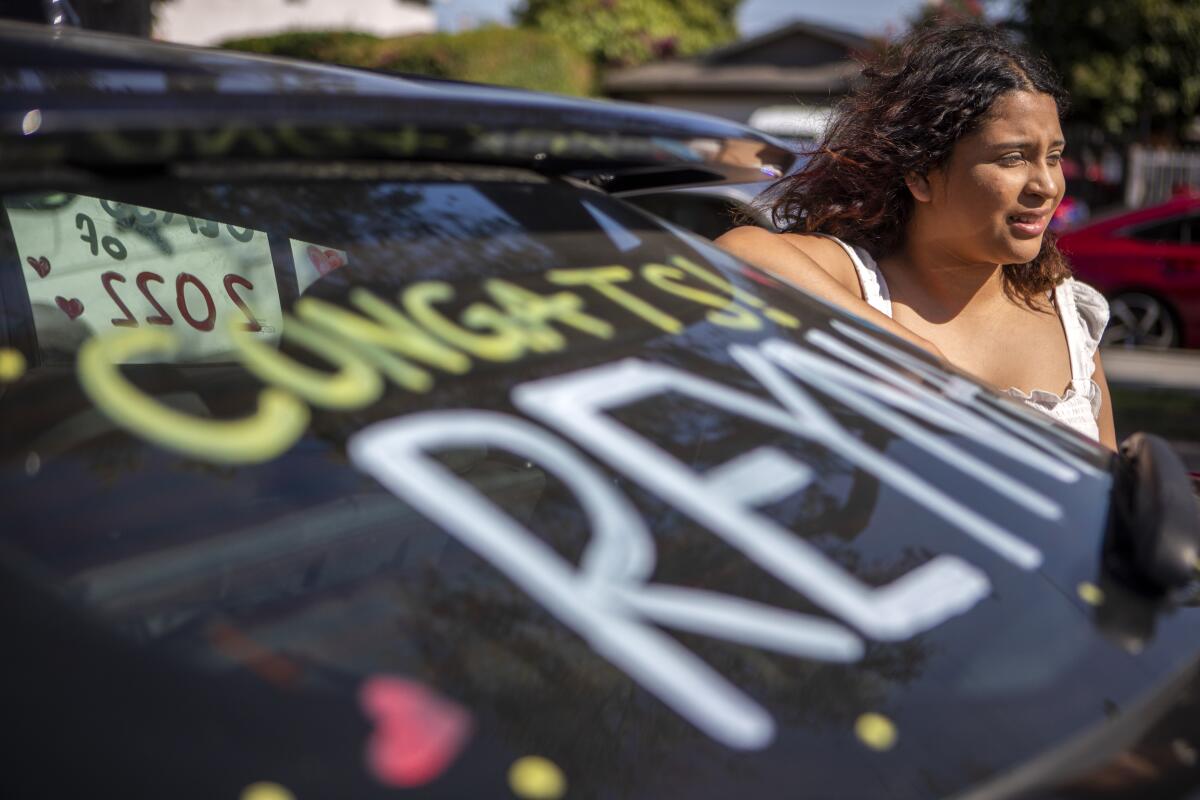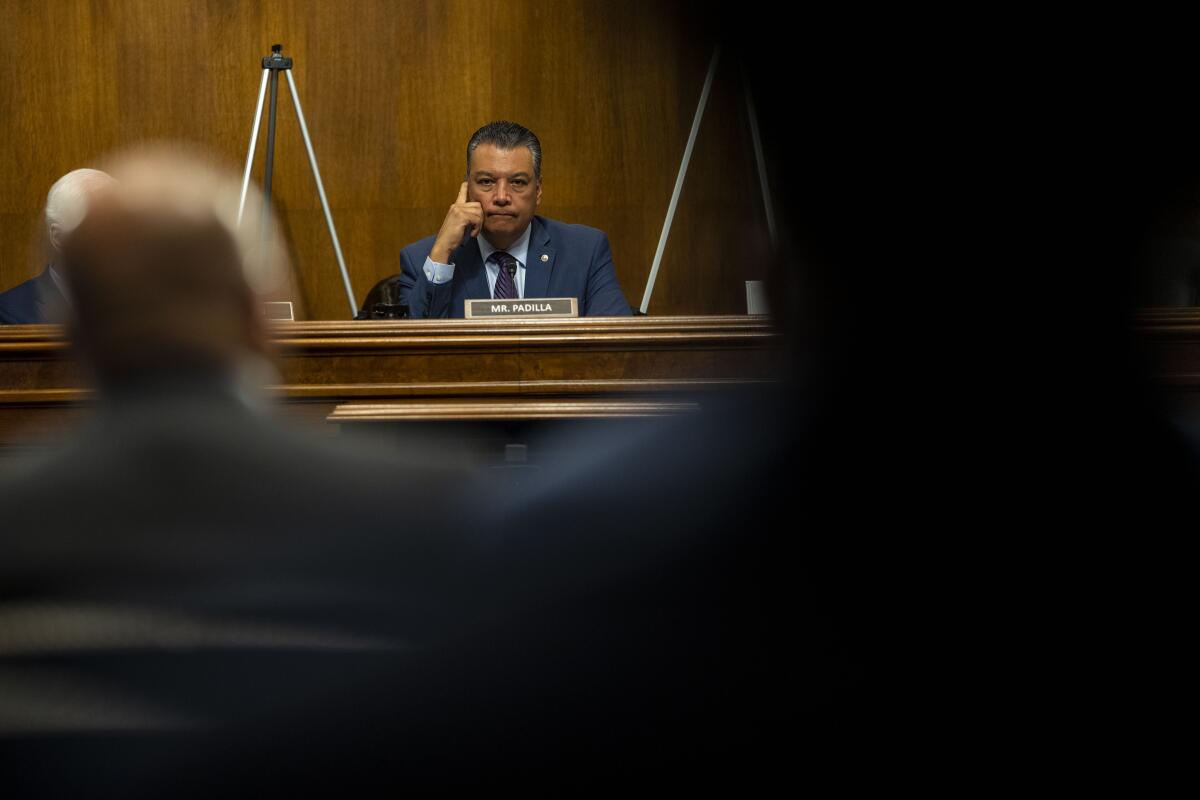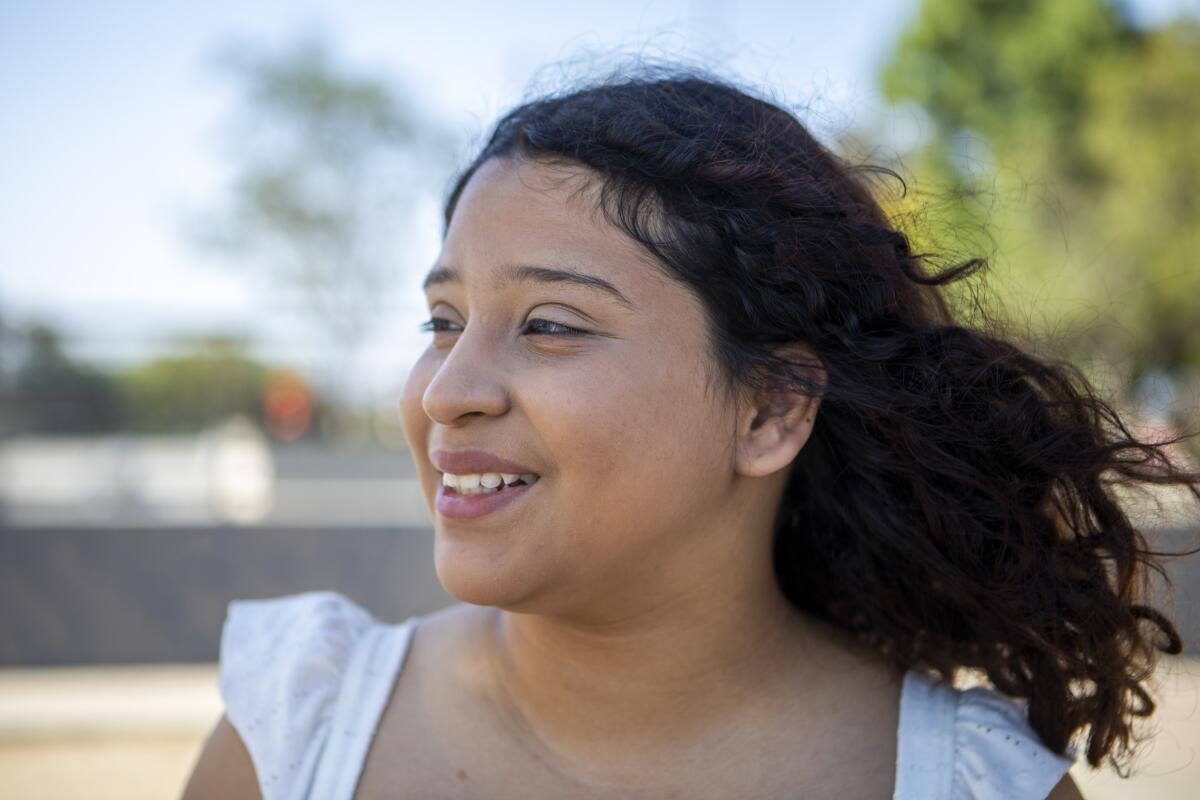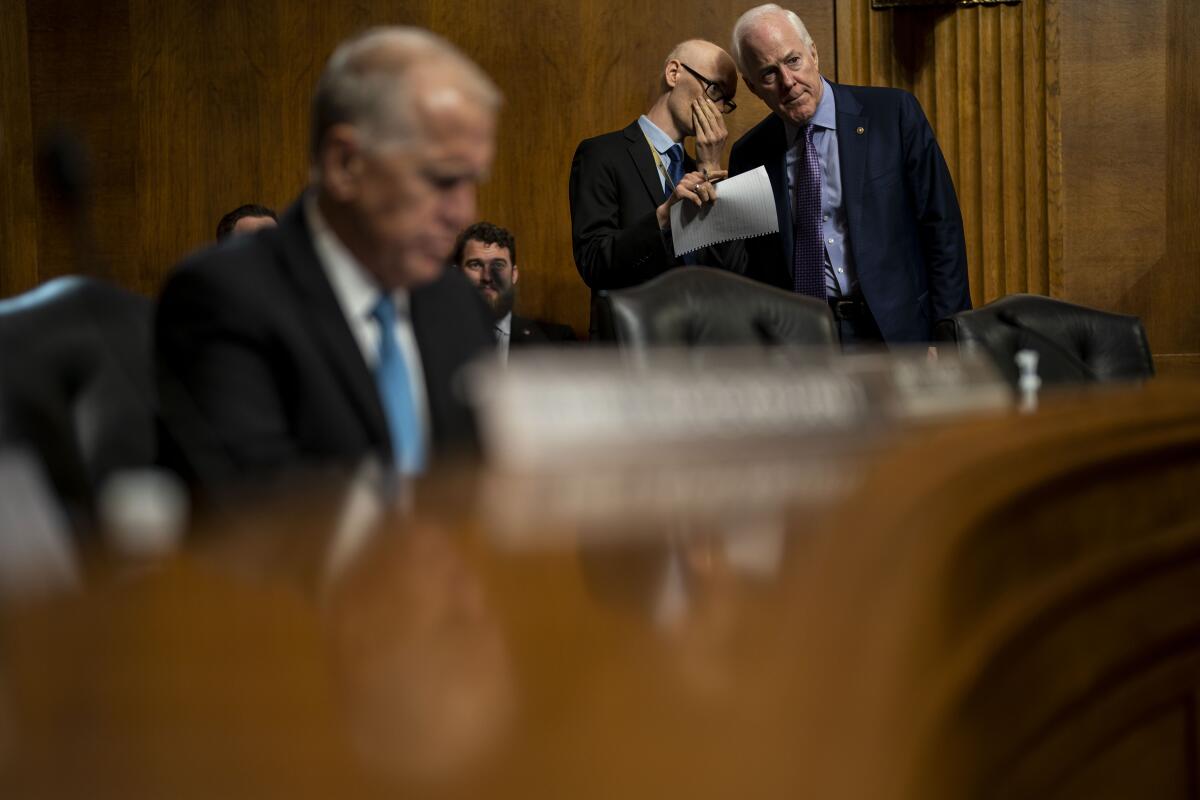No deportation protection. No work permit. On DACAâs 10th anniversary, thousands left behind

At 13, Reyna received her first planner. Since then, sheâs rigorously scheduled nearly every day of her life: showers, meals, study time, university applications. If she planned carefully, she believed, sheâd go to college and someday become a civil rights attorney.
But Reyna, who was 2 when her mother carried her across the border from Mexico for the United States in 2006, is in the country without legal status. Perhaps most importantly, she was cut off from Deferred Action for Childhood arrivals â better known as DACA â an Obama-era policy that gave certain immigrant youths a work permit and protection from deportation.
There are 611,470 DACA recipients, according to USCIS data from Dec. 31, 2021, and more than 800,000 people have been enrolled since its inception. To qualify, so-called Dreamers had to have been in the U.S. since 2007, have arrived before turning 16, and be under age 31 as of 2012. They also needed to meet certain educational and criminal history requirements.
As DACA turns 10 today, itâs bittersweet for Reyna, who graduated high school in Los Angeles this year along with an estimated 100,000 other immigrant youths without legal status and without the benefit of DACA, according to a study released in May.
They are coming of age without the benefits and protections that their older peers enjoy, because they were too young to qualify for the program before the Trump administration moved to end it five years ago and a court ruling limited the government to process DACA renewals, not new applications. In July, the 5th Circuit Court of Appeals is set to hear oral arguments in the case â which is likely to reach the Supreme Court â that will decide whether such an expansive program is lawful.

Without DACA, Reyna is at a disadvantage. The 18-year-old, who missed out on DACA when Trump started to unravel it, is not protected from deportation and isnât able to work lawfully because she doesnât qualify for a work permit.
âIâm so used to planning. It stresses me out that Iâm not able to really plan out my future,â said Reyna, who didnât want to be fully identified because of her lack of legal status. âEven if I go to college, would I be able to get a job after?â
Many who form part of the post-DACA generation have friends, older siblings or cousins who are covered by DACA. Theyâve seen them move from the margins of society to a kind of middle-class lifestyle.
Those with DACA have pursued careers. Theyâve bought homes in better neighborhoods. Theyâve financially helped their parents. Theyâve opened bank accounts and saved money. DACA recipients contribute $3.4 billion annually to the U.S. Treasury and $42 billion to the annual GDP, according to a 2018 report by the American Action Forum, a center-right think tank in Washington.
âDACA is indisputably the most successful policy of immigration integration of the last several decades,â said Roberto Gonzales, a professor of sociology at the University of Pennsylvania who specializes in immigrant youths and DACA.
âAt the same time, those younger siblings, maybe cousins, younger people within the same communities havenât had those same opportunities. They are 15, 16 years old and they would be eligible to obtain DACA and take after-school jobs and acquire driverâs licenses and to start thinking about college,â he said. âInstead, they are stuck.â
Janet Napolitano was secretary of the Department of Homeland Security in 2012 when young immigrant activists persuaded the Obama administration to protect them from deportation. Reflecting on the thousands of people left out of DACA, Napolitano told The Times that she wishes the program had included the ability to continuously adjust the dates so that those who arrived in the U.S. after 2007 could apply.

âWeâve now had all of these young people who have been in DACA and theyâve created their own legacy,â said Napolitano, who served as president of the University of California from 2013 to 2020. âThe notion that weâre going to throw them all potentially into a deportation proceeding, it just seems to me inconsistent with good immigration enforcement.â
In the last decade, the gap between those who benefited from DACA and those who havenât has continued to widen.
Many high schools and colleges have established student services and trained staff in how to help students with DACA, but most students without legal status donât qualify.
âMany of the policies and institutional responses are way behind in trying to meet their needs and addressing needs that are very different now than those for DACA beneficiaries,â Gonzales said.
That was true for Kelly, a 19-year-old who moved to the U.S. from China five years ago. She asked The Times to withhold her last name because she is in the country without legal status.
Kelly, an incoming sophomore who studies clinical nutrition at UC Davis, doesnât qualify for DACA because she arrived after the 2007 cutoff date. She arrived legally but overstayed her tourist visa.
She was âa little bit sadâ when she realized DACA and its benefits were just out of reach. She was up against a learning curve on how to qualify for college financial aid. Although university staff wanted to help her, she said, their experience with students without legal status seemed limited to students with DACA protection.
Finally Kelly determined that she qualified for the California Dream Act, which allows students who lack legal status to pay in-state tuition.
Her younger sister, who attends a high school east of Los Angeles, also lacks legal status. Kelly hopes she can help her navigate the college admissions process more seamlessly.
âAll the mistakes I made, I can try to prevent them for her,â she said.
Earlier this year, New York City granted DACA recipients the right to vote in municipal elections. It was an ambivalent victory for Chaewon Jessica Park, an immigrant justice organizer at the MinKwon Center for Community Action, a New York City-based Asian Pacific American community organization.
Park and her family came to the United States from South Korea when she was 10 in 2011, too late to make them eligible for DACA.
âIâm advocating for something that I wonât even be eligible for,â said Park, a 22-year-old incoming senior at Columbia University, recalled her thinking.
Sheâs frustrated by a narrative that only focuses on DACA recipients. Some media outlets, she said, only ask to speak with those who have DACA. Itâs a continuation of the narrative of good immigrants versus bad immigrants, she said.
âMy voice gets diminished,â she said.
Itâs been 21 years since the Dream Act, which would have offered permanent residency to people like Park, was first introduced in the Senate.
During a Senate Judiciary hearing Tuesday, Sen. Alex Padilla (D-Calif.) connected the need for a permanent solution on DACA to the national labor shortage. He acknowledged that as more high schoolers graduate without access to DACA, the situation isnât improving.
âWhen promising students ... are pushed into the shadows, we all lose,â he said. âCongress must pass a legislative solution for Dreamers so more students can earn their degrees and join our workforce. Our economy needs the talents and passion of immigrant youth.â

Last year, after Democratic legislators introduced the Dream and Promise Act offering deportation protections to 4.4 million immigrants, Sens. John Cornyn (R-Texas) and Thom Tillis (R-N.C.) asked for targeted legislation to offer permanent legal status to DACA recipients in exchange for likely proposals on border security and interior enforcement.
âUnfortunately, that request was declined,â Cornyn said. âIn the meantime, the DACA case continues to wind its way through the courts, bringing us closer to the day when the program is likely finally and completely struck down.â
The post-DACA generation faces common challenges, but much also depends on which state those young people live in.
For years, Park has dreamed of becoming a teacher. But even though New York allows DACA recipients to get teacher certifications, people without DACA are not eligible.
Not being eligible to become a teacher is âdevastating,â she said. Instead, Park is applying to law school, hoping to think about her future âa little bit later,â she said.
In California, immigrant youths like Park donât have to pay out-of-state tuition to attend public universities. It was the same for Reyna, who graduated top of her class at a Green Dot Public School in L.A., and ended up getting offered a full scholarship to UC Berkeley and Scripps College.
But thatâs not the case for immigrant youths without DACA who live in the 28 states that donât provide in-state tuition for students without legal status, and therefore must pay full tuition to attend state schools.
Karen NuĂąez Sifuentes moved to Colorado when she was 13 years old from Coahuila, Mexico, overstayed her tourist visa and is now in the country without legal status. She didnât qualify for DACA because she arrived in the U.S. in 2012.
She was accepted to her dream college â Regis University, a private Jesuit institution in Denver. Although she received a $16,000 scholarship from the university, she was not eligible for federal financial aid because of her legal status and lack of DACA.
She ended up attending and graduating from MSU Denver with a degree in biochemistry but couldnât pursue a career in science because she wasnât allowed to legally work for federally funded labs. That wouldnât have been a problem if sheâd had DACA.
âIâd planned on getting my masterâs, be in a lab and work my way to get a PhD,â NuĂąez said. âI had to say goodbye to those dreams.â
Unable to secure a work permit, she ended up starting her own limited liability company and contracting her services as a program and engagement coordinator with ConVivir Colorado, a leadership program for immigrant students.
Although federal law prohibits employers from hiring someone here illegally, there is no law prohibiting such a person from starting a business or becoming an independent contractor.
Itâs been hard for NuĂąez to see her college friends with DACA move on. One went to medical school. Another is on track to become a physicianâs assistant. A third is in dental school.
âMaybe some people go through something difficult, but there is a light at the end of the tunnel,â she said.
âFor me, I donât feel like there is a light in the end of the tunnel. I have to be comfortable with the darkness.â
More to Read
Sign up for Essential California
The most important California stories and recommendations in your inbox every morning.
You may occasionally receive promotional content from the Los Angeles Times.







![[20060326 (LA/A20) -- STATING THE CASE: Marchers organized by unions, religious organizations and immigrants rights groups carry signs and chant in downtown L.A. "People are really upset that all the work they do, everything that they give to this nation, is ignored," said Angelica Salas of the Coalition of Humane Immigrant Rights. -- PHOTOGRAPHER: Photographs by Gina Ferazzi The Los Angeles Times] *** [Ferazzi, Gina -- - 109170.ME.0325.rights.12.GMF- Gina Ferazzi/Los Angeles Times - Thousands of protesters march to city hall in downtown Los Angeles Saturday, March 25, 2006. They are protesting against House-passed HR 4437, an anti-immigration bill that opponents say will criminalize millions of immigrant families and anyone who comes into contact with them.]](https://ca-times.brightspotcdn.com/dims4/default/34f403d/2147483647/strip/true/crop/1983x1322+109+0/resize/840x560!/quality/75/?url=https%3A%2F%2Fcalifornia-times-brightspot.s3.amazonaws.com%2Fzbk%2Fdamlat_images%2FLA%2FLA_PHOTO_ARCHIVE%2FSDOCS%2854%29%2Fkx3lslnc.JPG)





